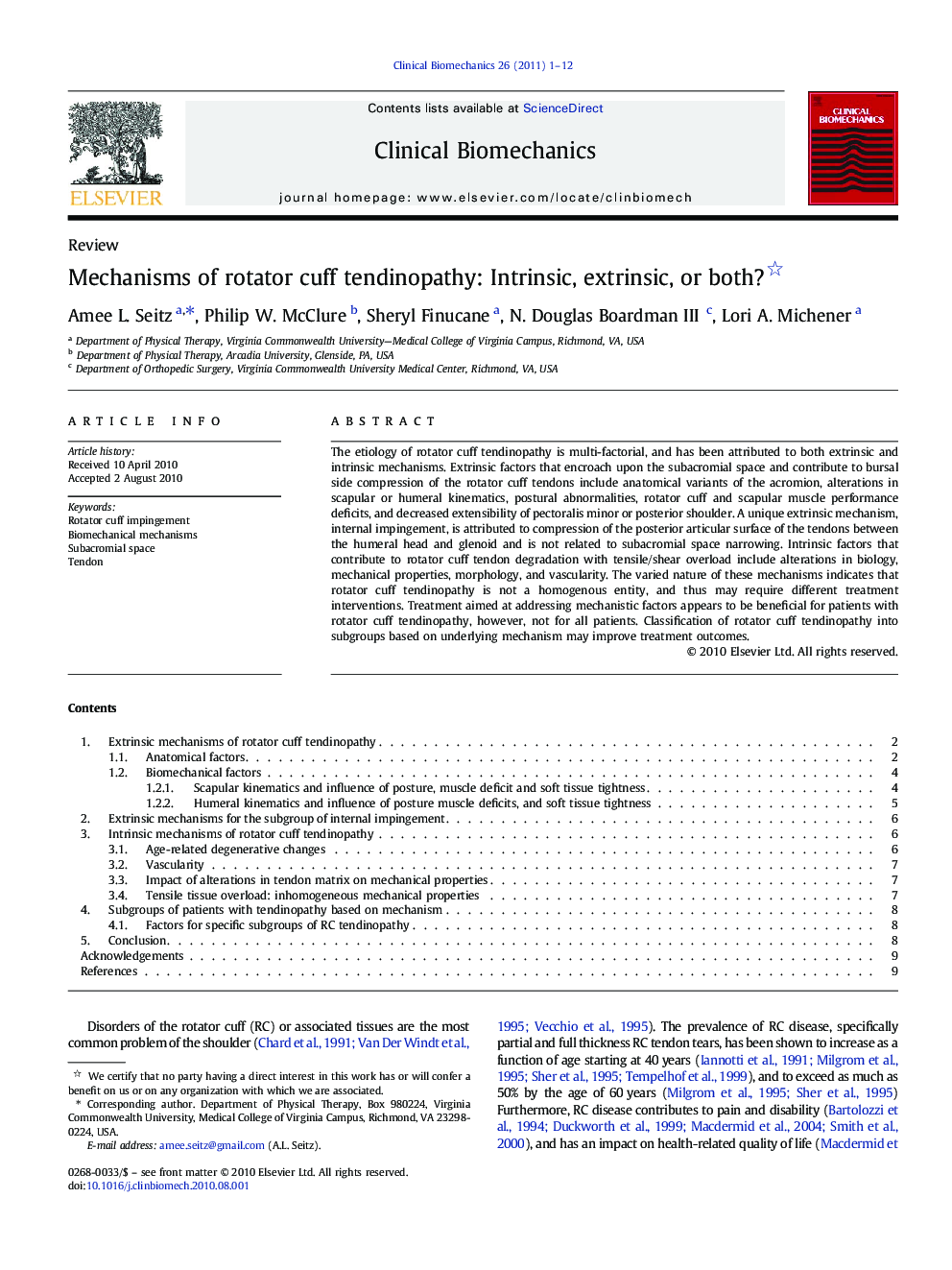| Article ID | Journal | Published Year | Pages | File Type |
|---|---|---|---|---|
| 4050998 | Clinical Biomechanics | 2011 | 12 Pages |
The etiology of rotator cuff tendinopathy is multi-factorial, and has been attributed to both extrinsic and intrinsic mechanisms. Extrinsic factors that encroach upon the subacromial space and contribute to bursal side compression of the rotator cuff tendons include anatomical variants of the acromion, alterations in scapular or humeral kinematics, postural abnormalities, rotator cuff and scapular muscle performance deficits, and decreased extensibility of pectoralis minor or posterior shoulder. A unique extrinsic mechanism, internal impingement, is attributed to compression of the posterior articular surface of the tendons between the humeral head and glenoid and is not related to subacromial space narrowing. Intrinsic factors that contribute to rotator cuff tendon degradation with tensile/shear overload include alterations in biology, mechanical properties, morphology, and vascularity. The varied nature of these mechanisms indicates that rotator cuff tendinopathy is not a homogenous entity, and thus may require different treatment interventions. Treatment aimed at addressing mechanistic factors appears to be beneficial for patients with rotator cuff tendinopathy, however, not for all patients. Classification of rotator cuff tendinopathy into subgroups based on underlying mechanism may improve treatment outcomes.
